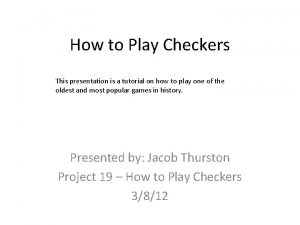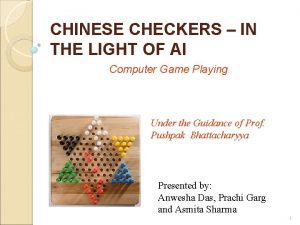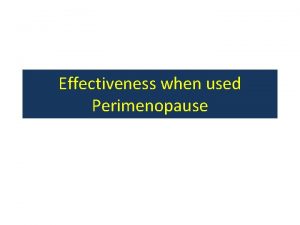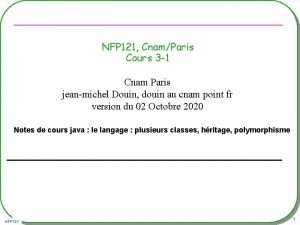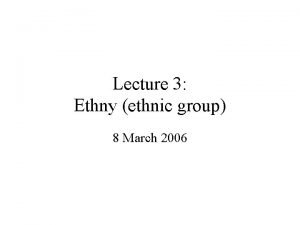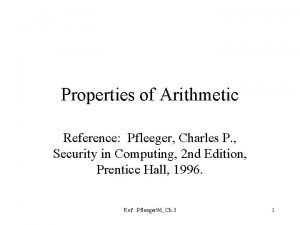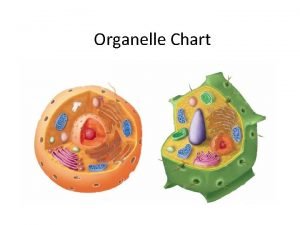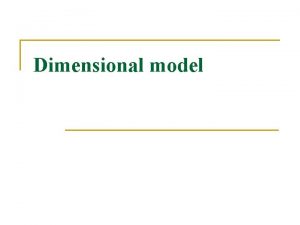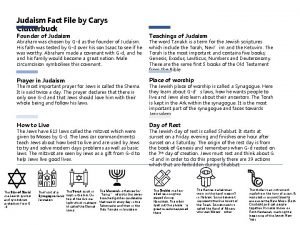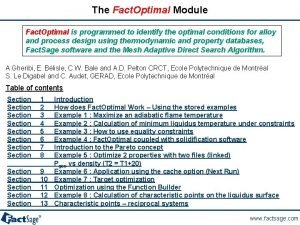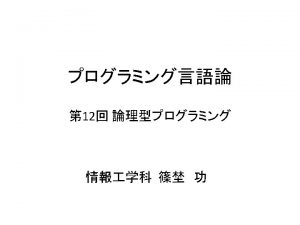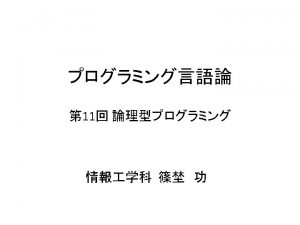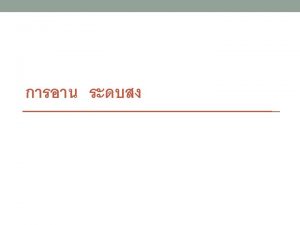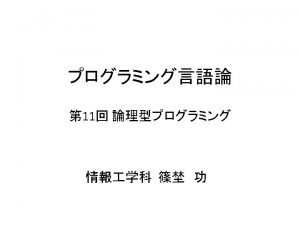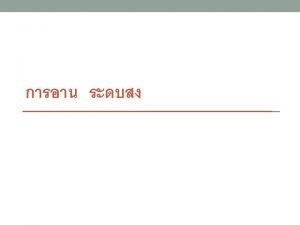NFP Fact Checkers Richard J Fehring Ph D






















































- Slides: 54

NFP Fact Checkers Richard J. Fehring Ph. D Mike Manhart Ph. D

Topics for Fact Checking • • Evidenced-Based Medicine/Healthcare Effectiveness for Avoiding pregnancy Effectiveness for Achieving pregnancy Effectiveness postpartum/breastfeeding Effectiveness perimenopause Effectiveness in atypical situations Differences between NFP and contraception Best NFP method? Too complicated?

Research Director & Chair

Evidence Based Medicine

Terms • • • Translation/Utilization CTSI https: //ctsi. mcw. edu/ Evidenced based practice/health care/nursing/medicine Evidenced based protocols/Clinical practice guidelines/reviews Comparative Effectiveness Research (IOM-CER) http: //www. iom. edu/Reports/2009/Comparative. Effectiveness. Rese arch. Priorities. aspx Patient Centered Outcomes Research Initiative (PCORI) http: //www. pcori. org/ Diffusion research/Scaling up research for poor/developing Countries: http: //www. nrsp. org. uk/6_2_2. aspx Research into copyrighted intellectual property/patent (Technology Trans Offices) Research into small business

Evidence Based Medicine - Why • Much of health care practice lacks a strong evidence base. • Methods to increase use of evidence – translational, utilization protocols, etc. • One of the best and most useful has been the development of systematic research reviews.

Systematic Research Reviews • Summaries of past research in which the reviewers extract, analyze and integrate findings from peer reviewed scientific studies and produce conclusions that can aid practice. • Systematic reviews are based on a wide and exhaustive search of existing studies.

Sources of Evidence • Blinded peer reviewed scientific journals • Scientific search engines (i. e. , NLM; Medical Index, Web of Science, Psy. Absts) • Example (The Linacre Quarterly or NCBC Quarterly) • Impact factors – highest (Human Reprod: Fertil/Steril) • Trials need to be registered at clinicaltrials. gov • Need to follow standards e. g. , CONSORT; STROBE, etc. • Need to provide evidence for external Institutional Review Boards (IRBs) for ethics. • Yearly – ethics approval – amendments


Brazilian Rock Star – Impact/scalingup/diffusion/e-Libraries

Steps of Research Reviews • Selecting topic important to practice, • Conducting an exhaustive search of evidence, • Establishing criteria for selecting best evidence, • Making a table of the studies in the review, • Analyzing the evidence, and • Providing a summary and conclusion.

Levels of Research Evidence Internal Validity: Controlling confounding factors that might explain the results.

Levels of Research Evidence

Grading of Evidence A-F • • • A = strong scientific evidence B = good scientific evidence C = mixed or conflicting evidence D = strong negative evidence F = lack of evidence

Clinical Trials • Single arm versus randomized comparison • Avistan example • Phase 3 • Generalizability – externally valid! • Are most NFP efficacy studies externally valid – probably NOT!

Comparative Effectiveness Research (CER) • Involves providing evidence for treatments, methods or approaches for managing major health concerns and conditions. • The purpose of CER is to identify what works best for which patients under what circumstances and is patient focused. • The Institute of Medicine (IOM) has delineated the 100 most significant areas that need better research and comparative evidence for treating or managing health problems (IOM 2009).

CER and NFP • In the top 25 list of the IOM’s CER is the effort to compare the effectiveness of innovative strategies for preventing unintended pregnancies. • Which method of NFP works best for which couples (for achieving or avoiding pregnancy) and under what circumstances is of interest to those health providers who provide or refer for a moral (and integrative) approach to family planning.

Cochrane Reviews Archie Cochrane, Ph. D Problems • Tamaflu • Metronixs • Bias of authors researchers • Ghost writers • http: //www. cochrane. org/

Grimes Cochrane Review of NFP • Grimes et al. (2010), in a systematic review of fertility awareness-based methods for avoiding pregnancy, identified 3 randomized controlled trials that have been published: • Medina et al (1980), comparing the ovulation method to the symptothermal method in Colombia; • Wade et al (1981), comparing the ovulation method to the symptothermal method in Los Angeles; • and Kass-Annesse (1989), comparing use of a vaginal sponge with and without a calendar plus basal body temperature method. • http: //summaries. cochrane. org/CD 004860/family-planning -with-methods-based-on-fertility-awareness

Reviews of NFP Studies • Manhart, M. Duane, A. L. Lind, I. Sinai, and J. Golden-Tevald. 2013. Fertility awareness-based methods of family planning: A review of effectiveness for avoiding pregnancy using SORT. Osteopathic Family Physician 5: 2 -8. • Smole, B. A. , and C. M. Robinson. 2012. Natural family planning. American Family Physician 86: 924 -928.

Effectiveness in Avoiding Pregnancy

Executive Director & Teacher • 25 yr. career in Drug development-retired • 28 yr. career NFP teaching couple

Recent Review

SORT- Strength of Recommendation Taxonomy • Developed for use by family medicine and primary care journals – Focus on patient centered outcomes • Framework to determine level of evidence for individual studies (evidence= 1, 2, 3) • Framework for Strength of Recommendation based on body of evidence (SOR= A, B, C) • Ebell, M. H. , et. al. (2004) Am Fam. Physician 69: 548 -56

Level of Evidence for Single S Ebell, M. H. , et. al. (2004) Am Fam. Physic

Defining a High quality FABM cohort clinical trial Critical Criteria Sexually Active Prospective Size Standardized counseling Description Only sexually active, fecund, women admitted Data collected prospectively Properly sized trial to address the research question 4, 2, 0 FABM taught to participants using standardized counseling 4, 2, 0, No Learning phase Follow-up starts immediately after method counseling Follow-up Survival Analysis IRB 4, 0 Participants followed for at least one year of method use 4, 0 Pregnancy rates calculated using survival analysis/life tables 4, 0 Pregnancies Procedures to ensure that all pregnancies are detected and recorded Recorded Prospective Pregnancies recorded as intentional only if prospectively classified as Intentions intentional Analysis of typical use pregnancy rates includes all unintentional typical use pregnancies, and all cycles of use correct use Points 4, 2, 0 4, 0 Analysis includes all cycles in which the method was correctly used to avoid pregnancy, and exclude from the denominator cycles in which the method was not correctly used to avoid pregnancies 4, 0 IRB review to ensure rights of participants were respected 4, 0

Scope of review • All peer-reviewed publications from 1980 • Rationale: – Sufficient time to have maximum # trials – Includes WHO Ovulation method publications • Approximately 150 citations identified – ~80 reviewed in depth

FABM Evidence for Efficacy in Postponing Pregnancy • 29 clinical trials • 8, 200 women • 107, 000 cycles • All major FABM- at least one study evidence level 1 Sounds like a lot but….

Clinical Data Submitted for a Single Drug Approval • 10 separate efficacy studies • 15, 396 patients followed 1 -10 years • 20 -30 publications per year from dataset post approval.

Key issues in NFP studies • • • Learning periods High drop out/ lost to follow-up Pearl rate analysis Retrospective Published without peer review Inconsistency/lack of clarity on rules used across studies

Best Evidence of FABM in postponing pregnancy Method 1 yr. probability SORT unintended pregnancy Evidence Correct use Typical use Level Score Citation 0. 4% 1. 6% 1 55 Frank Hermann (2007) 0. 6% 2. 2% 1 55 Frank Herrmann (1997) 0. 6% 2. 0% 1 55 Frank Herrmann(2007) 0. 4% 1 55 Frank Herrmann (1997) 0. 5% -- 1* 43 Hilgers (1998) 0. 14% -- 1* 43 Howard & Stanford (1999) 3. 2% 2 52 (post hoc) 1. 1% 10. 5% 1 52 Indian Med. Tsk Frc. (1996) Marquette 2. 1% 14. 2% 1 54 Fehring (2007) TDM 3. 5% 13. 7% 1 56 Arevalo (2004) SDM 4. 7% 12% 1 56 Arevalo (2002) STM w/barrier Creighton Billings Trussell (1991)

New Clinical Data • Randomized comparison of 2 internetsupported Marquette models – “Monitor alone” vs. “Mucus alone” – All charts recorded online Total Pregnancies per 100 women over 12 months Monitor N=197 Mucus N=164 Stat. Diff. Perfect use 0 2. 7 N. S. Typical use 7 18. 5 Sig. dif. # pregnant in 1 st 3 mos. 5 11 Fehring et al; Contraception 88(1): 24 (2013)

Strength of Recommendation • Level A: (consistent quality evidence) – STM & STM+ barriers – Creighton - correct use only • Level B: (Inconsistent or limited evidence) – Billings – Marquette – SDM – TDM

Conclusions Fertility Awareness Based Methods: • Robust evidence of effectiveness • As effective as hormonal contraceptives • More research needed • More than a means to prevent pregnancy • Family physicians well-trained to support

Evidence Grades for NFP Preventing pregnancy in reproductive aged women: 1. When methods used correctly 2. When methods used typically 3. Is there a difference between methods for typical use? 4. Is NFP as good as Oral contraceptives? Grades MDM RJF A B C C F F

Effectiveness in Achieving Pregnancy

Gnoth, et al. , (2003) • Time to pregnancy: Results of the German prospective study and impact on the management of infertility. Human Reproduction, 18(9), 1959 -1966. • 346 women who used STM to conceive. The couples timed their intercourse acts with the identification of peak fertility according to vulvar mucus sensations. The cumulative probabilities of conception were 38, 68, 81, 92% respectively at 1, 3, 6, and 12 months for the whole group. • NO evidence that these rates are better than random intercourse.

Other studies • Hilgers, et al. , reported a study in which 49 of 50 couples (of normal fertility) achieved a pregnancy within 5 months by focusing intercourse on days of good quality cervical mucus. • Hilgers TW, Daly KD, Prebil AM, Hilgers SK. Cumulative pregnancy rates in patients with apparently normal fertility and fertility-focused intercourse, Journal of Reproductive Medicine. 1992: 37: 864 -866.

Robinson JE, Waklin M, Elllis JE. Increased pregnancy rate with use of the Clearblue Easy Fertility Monitor. Fertility and Sterility, 2007; 87(2): 329 -34. • 1, 000 women volunteers into two groups, one group of 500 received an EHFM, and the control group of 500 women volunteers were asked to do what they wished to achieve a pregnancy, including the use of pregnancy assist devices (e. g. , ovulation test kits and basal body temperature). • The pregnancy rate during the first cycle was 15. 2% (or 46 of 302) for the EHFM group and 7. 8% (27 of 347) for the control group. The two cycle cumulative pregnancy rate was statistically higher for the EHFM at 22. 7% compared with the control group at 14. 4% (p=0. 006).

Tiplady, S. , Jones, G. , and Campbell, M. et al. , Home ovulation tests and stress in women trying to conceive: a randomized controlled trial. Human Reproduction, Advance Access published October 18, 2012. • Volunteer couples from the UK were randomized into either a group who were provided a digital urinary ovulation predictor kit based on detecting a rise from baseline in urine luteinizing hormone (LH) or a group of women who were advised to have frequent intercourse (every 2 -3 days) and not use any self-observation fertility indicators. Of the 210 UK volunteer women/couples 115 were randomized into the digital LH kit group and 95 into the frequent intercourse group. • Although pregnancy rates were not the main question of the study, they did find 43% of the women in the digital LH group achieved pregnancy and 30% in the control group. The odds of achieving pregnancy with the digital LH test kit and timed intercourse was 59% greater compared to the control group.

Mu and Fehring (2013) • Purpose: To compare pregnancy rates when couples have intercourse on self-estimated high and peak fertile days and when they only have intercourse on low fertile days during the fertile window (FW). • 124 couples who utilized our online charting websites to achieve pregnancy from January 2010 to November 2012. Participants used an electronic hormonal fertility monitor (EHFM) or self-observed cervical mucus or both to determine fertility during the estimated FW. • Results: The pregnancy rate was 87 per 100 women at 12 months when intercourse happened on high or peak days and 5 per 100 when intercourse occurred only on low days of the FW. Chi square analysis showed a greater proportion of pregnancies with intercourse on high and peak fertile days of the menstrual cycle (x 2 = 40. 2, p <. 001, df =1). • Accepted for publication in MCN: The American Journal of Maternal Child Nursing.

Summary • There is growing evidence to show that focused intercourse during the fertile time as estimated by self monitoring of natural biological markers of fertility will increase the pregnancy rate and decrease the time to pregnancy. • Two randomized trial comparing self-indicators of fertility to estimate the fertile phase and timed intercourse exists. The National Institute for Clinical Excellence (NICE) guidelines specifically state that use of focused intercourse is too stressful and no more effective than having intercourse 2 -3 time per week. • The ASRM policy committee recommended that electronic or other devices that are designed to aid the couple in determining the optimal time of fertility may be useful for couples who have infrequent intercourse.

Evidence Grades for NFP Achieving pregnancy in reproductive aged women Grades MDM RJF B C

Effectiveness when used postpartum

Lactational Amenorrhea Method 1988 Bellagio Consensus • <2% probability of pregnancy if: • Fully, nearly fully breastfeeding • No bleeds • Baby < 6 months old • Confirmed in subsequent studies

LAM- WHO trial • 4118 breastfeeding women, 7 countries • 3443 completed study • 85 total pregnancies – 46 in B. F women not using contraception WHO Task Force. Fertil. & Steril. 72(3): 431 (1999)

LAM-WHO trial Cumulative Pregnancy Rates using Various Definitions of End of Amenorrhea Fully Breastfeeding women Amenorrhea ending def. Partially B. F. HRPconfirmed HRP-1 st menses Woman’s perception Any 1 st bleed range 6 months 1. 2 0. 9 1. 0 0. 7 -0. 8 12 months 6. 8 6. 6 7. 4 6. 9 3. 7 -5. 2 WHO Task Force. Fertil. & Steril. 72(3): 431 (1999) Among breastfeeding women w/o contraception expect: <2% probability pregnancy up to 6 months <8% probability pregnancy up to 12 months

NFP in Postpartum Women • Minimal data to examine • Most among breastfeeding women – LAM influence

Ovulation Method Postpartum • 378 Chilean women (87% learned OM while PP) • 50 unplanned pregnancies Cumulative Unplanned Pregnancy Rates/100 women All women (n=378) No B. F. (n=198) Any B. F. (n=367) Fully B. F. (n=39) 6 months 3. 5 8. 2 2. 3 1. 2 9 months 7. 2 12. 6 5. 3 - - 12 months 11. 1 15. 3 - - Perez et. al. , Contraception 38(5): 499 (1988) • Impact of LAM makes effectiveness of OM unclear • Other studies suggest ↑unintended pregnancies compared to regular cycling women Labbok et. al. ; Am J Ob Gyn 165(sup): 2031 (1991)

Cr. Ms Postpartum • 31 breastfeeding women (subset of larger trial) 12 month Cumulative Pregnancy Probabilities per 100 couples Method related User related Achieving related Total pregnancy Breastfeeding (n=31) 0 3. 8 19. 0 23. 8 Regular cycles (n=324) 0 1. 5 10. 2 13. 9 Howard & Stanford. Arch Fam. Med. 8: 391 (1999)

STM Correlates with First Postpartum Ovulation • 73 Breastfeeding mothers experienced STM users (3 countries) • Ovulation via daily urinary E/P metabolites • “STM is highly sensitive but not specific for detecting ovulation during breastfeeding” – STM accurately identified 77 -94% of potential fertile days – Abstinence recommended about half of days when not needed • 3 pregnancies before weaning (2 ndary outcome) – 0 before 1 st bleeding episode – 2 between 1 st & 2 nd bleeds (days 111 & 182 postpartum) – 1 after 2 adequate ovulations – STM rules not followed in all 3 Kennedy et al, Stud. Fam. Plann. 1995; 26(2): 107

SDM Bridge method • Bridge rules for first few cycles – After 1 st bleed- abstain day 11 to next bleed – Cycles #2+- abstain days 8 -24 until cycles 26 -32 days long (SDM 8 -19) • 157 women up to 9 mos use 6 mos. Pregnancy Rates for SDM Bridge Correct Use Typical Use 3. 7 (4 pregnancies) 11. 8 (16 pregnancies) Sinai & Cachan Contraception 86 (1): 16 (2012)

Marquette Model in B. F. Women • 183 self identified breastfeeding women using B. F. protocol for “monitor alone” • Correct Use- 2 pregnancies per 100 women (@ 9 mos amenorrhea, & after 3 rd menses) • Typical Use- 8 pregnancies per 100 women Month Women exposed Cum. Preg. Rate 1 198 0 3 138 0 6 117 0 12 74 8 Bouchard et al JABFM 26(1): 35 (2012)

Evidence Grades for NFP Preventing pregnancy in postpartum women: 1. LAM effectiveness 2. NFP in breastfeeding women 3. NFP in non-breastfeeding women Grades MDM RJF A B C C F F
 Facts about checkers
Facts about checkers Double jumping in checkers
Double jumping in checkers Parity checkers
Parity checkers Computer chinese checkers
Computer chinese checkers Stateful model checkers
Stateful model checkers King richard iii and looking for richard
King richard iii and looking for richard What is nfp
What is nfp Norme nfp01-012
Norme nfp01-012 Marquette nfp perimenopause
Marquette nfp perimenopause Ihr nfp
Ihr nfp Nfp paris
Nfp paris D21 marquette
D21 marquette Nfp rx solutions
Nfp rx solutions Ironshore private client group
Ironshore private client group Fact file on ethnic groups in bangladesh
Fact file on ethnic groups in bangladesh Freckle.student.com
Freckle.student.com Fact inference confusion examples
Fact inference confusion examples Fact and opinion jeopardy 4th grade
Fact and opinion jeopardy 4th grade Properties in math
Properties in math Urinary system model
Urinary system model In fact commas
In fact commas Dreamhome case study solution
Dreamhome case study solution Spectre marketing
Spectre marketing Old mutual absolute stable growth portfolio
Old mutual absolute stable growth portfolio Food a fact of life
Food a fact of life Zandlopermodel fact
Zandlopermodel fact Fact and opinion jeopardy
Fact and opinion jeopardy Misstatement or incomplete statement of material fact
Misstatement or incomplete statement of material fact Physical change fact
Physical change fact Food a fact of life sensory analysis
Food a fact of life sensory analysis Food a fact of life
Food a fact of life My family opinion and fact
My family opinion and fact Myth fact
Myth fact A bowling ball has three holes in it fact or opinion
A bowling ball has three holes in it fact or opinion Fact or opinion
Fact or opinion The fact or condition of being accountable
The fact or condition of being accountable Proposition of fact examples
Proposition of fact examples Ccc plus waiver
Ccc plus waiver Cell organelles and their functions chart
Cell organelles and their functions chart Thanksgiving facts
Thanksgiving facts Bscl fact sheet
Bscl fact sheet Ella makes the generalization that a 4s fact
Ella makes the generalization that a 4s fact Can you make them behave king george fact and opinion
Can you make them behave king george fact and opinion You are
You are Opinion versus fact
Opinion versus fact Types of fact tables
Types of fact tables Good teapot vs bad teapot
Good teapot vs bad teapot Foodafactforlife
Foodafactforlife Fact file about bees
Fact file about bees Factsage online
Factsage online Fact or opinion activity
Fact or opinion activity Swansea synagogue
Swansea synagogue Fact family of 50
Fact family of 50 Facts need not be proved
Facts need not be proved Hypothesis contrary to fact
Hypothesis contrary to fact

